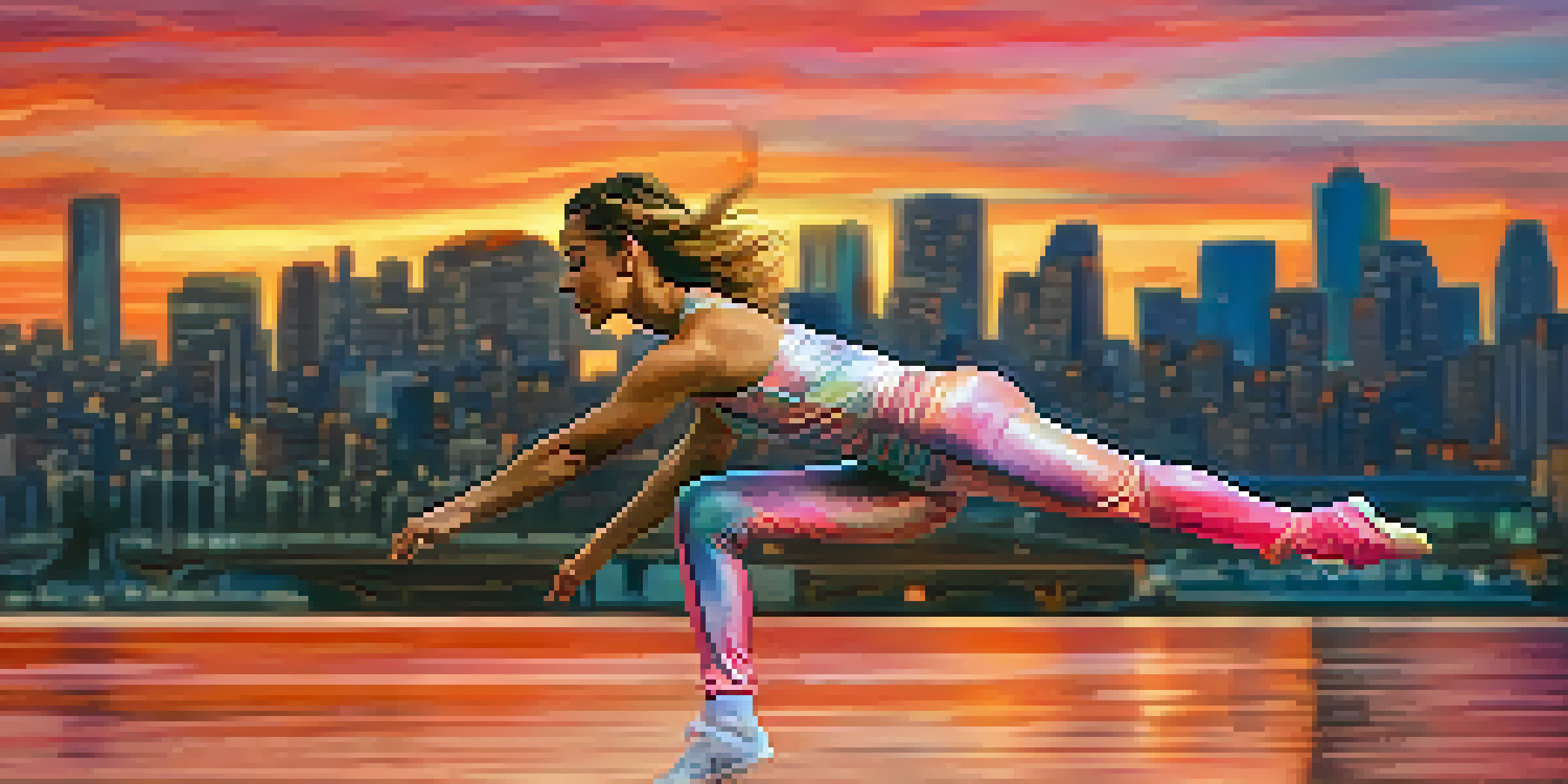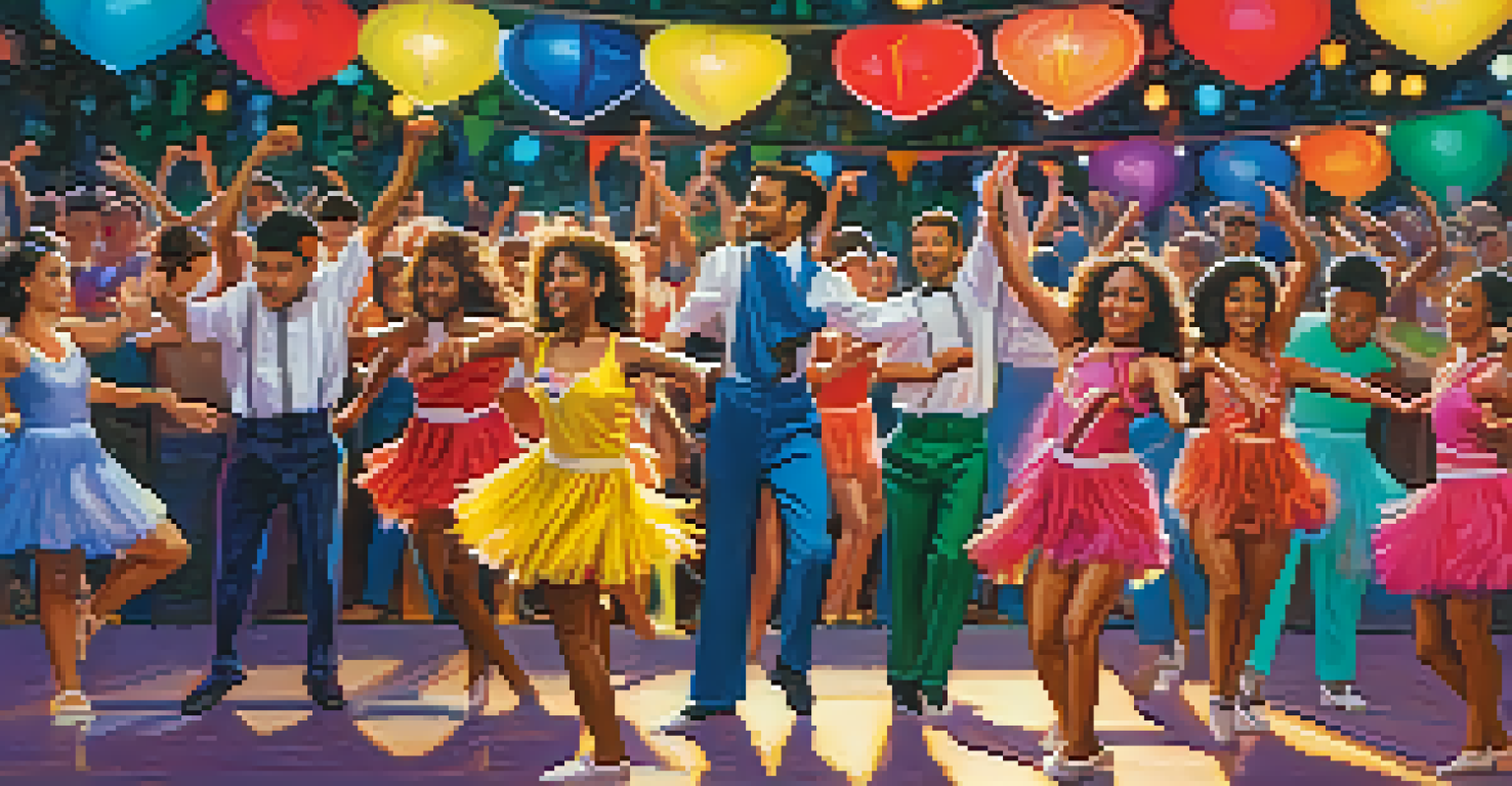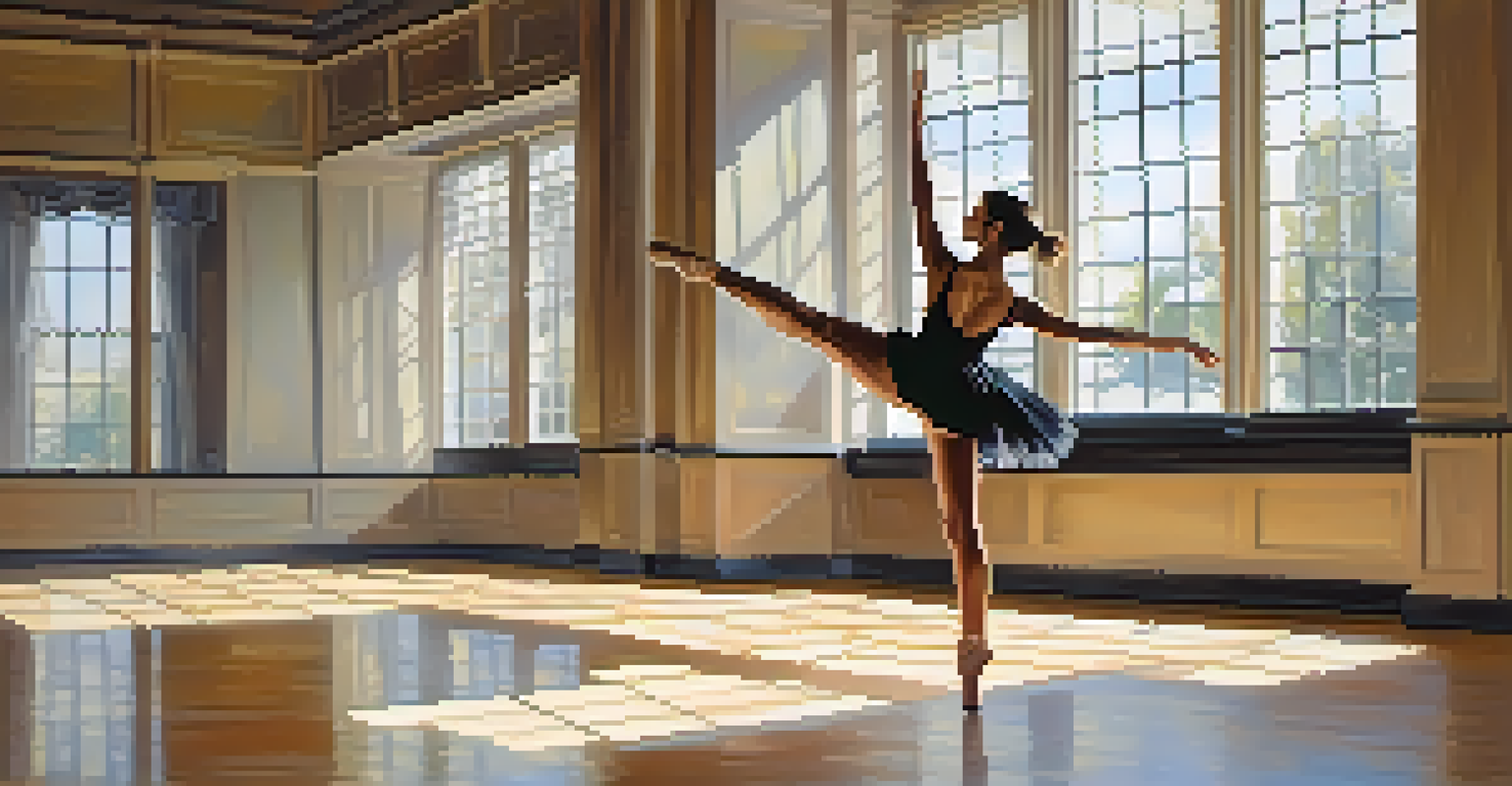The Influence of Social Media on Dance Competitions Today

Social Media as a Stage for Dance Talent
In today's digital age, social media platforms have become the new stage for aspiring dancers. Artists can share their performances with a global audience, attracting attention that was once reserved for traditional competitions. It's like having a front row seat to talent from all corners of the world, accessible at any time.
Dance is the hidden language of the soul.
Platforms like TikTok and Instagram allow dancers to showcase their skills through short, engaging videos. This instant gratification appeals to both performers and viewers, creating a vibrant community where creativity thrives. It's as if every dancer has their own spotlight, making it easier to find and connect with like-minded individuals.
Moreover, social media has turned the audience into active participants. Viewers can share their opinions, cheer for their favorites, and even influence which dancers rise to prominence. This interactivity transforms the way we think about talent and recognition in the dance world.
The Rise of Online Dance Competitions
With the influence of social media, online dance competitions have gained significant traction. These events allow dancers to submit their performances digitally, breaking geographical barriers and expanding participation. It's like having a global dance festival that anyone can join from the comfort of their home.

Online competitions also level the playing field for many dancers who might not have the resources to attend live events. This inclusivity opens doors for diverse talent, showcasing a wider range of styles and cultures. It's a refreshing change from traditional competitions, where only those with significant backing often get noticed.
Social Media as a Dance Platform
Social media has transformed into a global stage where dancers can share their talents and connect with audiences instantly.
However, the shift to online competitions isn't without its challenges. Dancers must navigate the technical aspects of filming and editing their performances to stand out. This adds a new layer of skill that competitors must master in addition to their dance techniques.
Social Media Trends Shaping Dance Styles
Social media trends play a crucial role in shaping the styles and techniques dancers choose to showcase. Viral challenges can create a ripple effect, leading dancers to adopt similar moves and aesthetics to keep up with the latest fads. It's like a dance evolution fueled by the collective creativity of the online community.
The dance is a poem of which each movement is a word.
For instance, a popular TikTok dance can inspire thousands of dancers to create their own versions, each adding a unique twist. This collaborative spirit fosters innovation and encourages individuals to push their boundaries. As a result, we see an ever-evolving landscape of dance styles that reflect current trends and cultural moments.
Moreover, social media allows dancers to capture and share their interpretations of these trends, further enriching the dance community. This continuous exchange of ideas not only energizes performances but also helps preserve and evolve traditional dance forms.
Building a Personal Brand through Social Media
For many dancers today, social media is more than just a platform to share performances; it’s a tool for building a personal brand. By curating their profiles, dancers can showcase their unique style, personality, and journey. This branding can significantly influence their opportunities in the competitive dance world.
Engaging content, such as behind-the-scenes glimpses or personal stories, helps dancers connect with their audience on a deeper level. It’s not just about the dance; it’s about the dancer. This authenticity resonates with followers and fosters a loyal fan base, which can lead to sponsorships and collaborations.
Online Competitions Expand Access
The rise of online dance competitions breaks geographical barriers, allowing diverse talents to participate from anywhere.
Furthermore, dancers who effectively manage their social media presence can leverage their following to gain recognition in competitions. Judges may take notice of dancers who have built a substantial online presence, as it often indicates a strong work ethic and dedication.
The Role of Influencers in Dance Competitions
Influencers have emerged as significant players in the dance competition realm, impacting trends and shaping perceptions. Many dancers with substantial followings can sway opinions, generate buzz, and even mentor others in the community. It’s like having a dance coach who also doubles as a social media guru.
These influencers often participate in or judge competitions, bringing their audiences along for the ride. Their presence can elevate an event's profile and attract more participants and viewers. This influence extends to setting standards for performance, choreography, and even how dancers present themselves online.
However, the rise of influencers also raises questions about authenticity and the essence of competition. Are dancers competing for recognition or merely for likes and followers? This dynamic adds an interesting layer to the landscape of dance competitions.
The Impact of Viewer Engagement on Competition Outcomes
Viewer engagement on social media can significantly impact the outcomes of dance competitions. Many events now incorporate audience votes, where followers can support their favorite performers with likes, shares, or comments. This shift creates a more interactive and exciting atmosphere for both competitors and fans.
However, this reliance on viewer engagement also introduces new dynamics to the competition. Dancers may feel the pressure to cater their performances to what they think will resonate with online audiences. It’s a balancing act between personal expression and marketability, which can sometimes complicate the art of dance.
Influencers Shape Dance Trends
Influencers play a crucial role in dance competitions, impacting trends and perceptions while blurring the lines between recognition and social media popularity.
Moreover, the immediacy of social media feedback can lead to both encouragement and criticism. Dancers must learn to navigate this duality to maintain their passion while being open to constructive feedback. This skill becomes essential in a world where public opinion can shift rapidly.
Future Trends: What Lies Ahead for Dance Competitions
As technology and social media continue to evolve, the future of dance competitions will likely incorporate even more innovative elements. We may see virtual reality experiences or augmented reality layers that enhance performances and viewer engagement. Imagine watching a competition where dancers can interact with digital environments in real-time!
Furthermore, the integration of data analytics may change how competitions are judged and organized. Competitors could receive detailed feedback based on audience engagement metrics and social media performance, providing insights that were previously unavailable. This data-driven approach could help dancers refine their skills and strategies.

Ultimately, the influence of social media on dance competitions will continue to shape the landscape in exciting ways. As dancers adapt to these changes, we can anticipate a vibrant future filled with creativity, connection, and community.